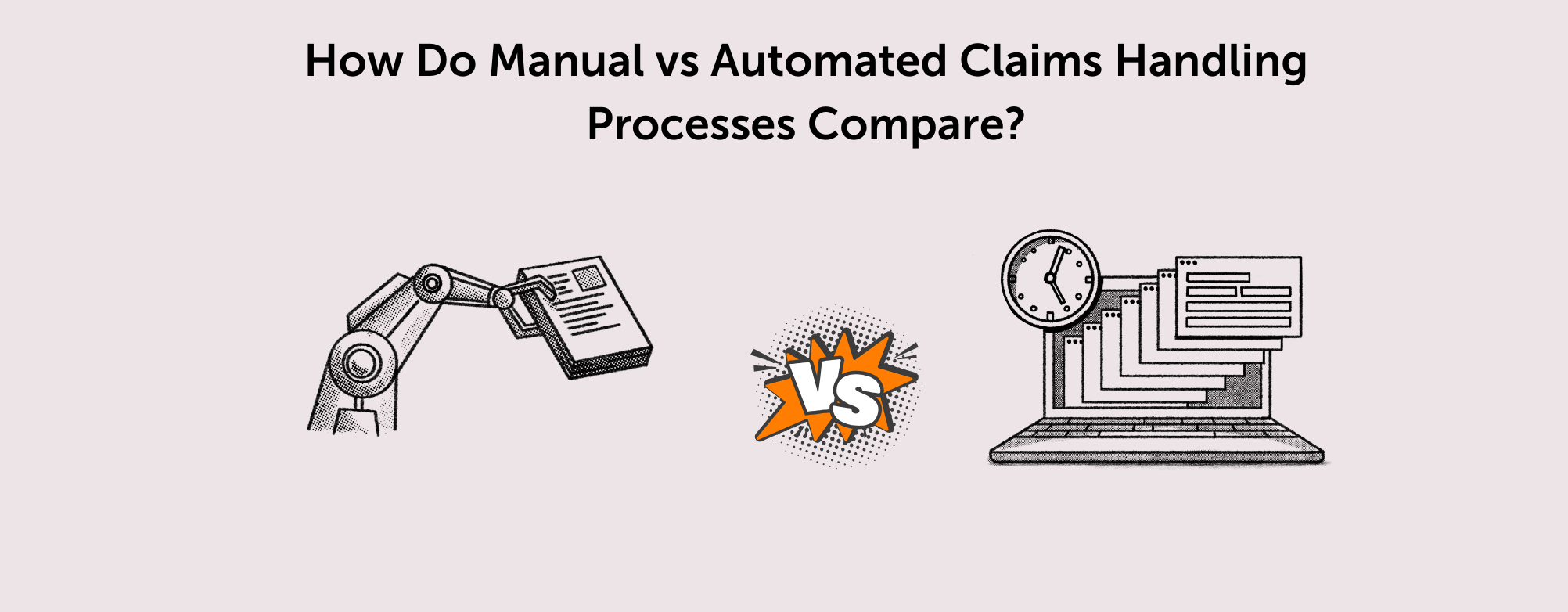The claims process is arguably the most important moment in the insurance lifecycle. It is often the first time a customer speaks to their insurance provider directly, and it is usually under stressful circumstances. Customers expect the process to be fast, efficient, and convenient. If it isn’t, it can have a huge impact on that customer’s chance of renewal, and the likelihood they’ll recommend you to their networks.
Plus, a poorly run claims process doesn’t just impact customer satisfaction; it is also a huge area of potential losses for insurance providers. Claims handling accounts for around 75% of total costs in motor and about 55% in home cover, according to the Financial Conduct Authority. Furthermore, last year, experts stated that an average of 11% of claims settlements could be classified as leakage through inefficiencies and human error.
Digitising and automating key aspects of the claims process can help insurance companies overcome many of these challenges and deliver a more convenient and streamlined experience for customers and staff. In fact, over two-thirds of insurance industry professionals view the claims process as one of the prime areas for augmentation by AI.
If you’re unsure how an automated claims process will differ from the traditional claims journey, here we outline how it transforms the key stages.
How will an automated claims process differ from traditional claims?
First Notification of Loss (FNOL)
Instead of calling a contact centre to log a claim, with insurance software, a customer can claim through various channels, from self-service to email or an online chatbot, 24 hours a day. They can upload documents relevant to their claim, including photos, receipts, police reports, and medical records. This data is automatically logged in the system, visible to relevant and authorised staff. It can also be sent to Anti Money Laundering (AML) and sanctions check databases, where required.
Data validation and fraud detection
Instead of manually checking all claims for fraud, claims teams can set insurance software to verify key information for consistency and automatically flag suspect claims via an alarm. These can then be manually checked by the claims team.
Claims assessment and decision-making
Rather than every claim being assessed by a team member, software algorithms can be set so that straightforward cases are processed automatically at scale, significantly accelerating the process for most customers. AI can analyse photos and documents to assess the extent of the loss or damage, estimating repair, replacement, or treatment costs. More complex cases are flagged with an alarm for review and approval by a claims handler. Once this process is complete, the system will automatically notify the customer of the result and any further actions on their part.
Settlement
Possibly the most important part of the process for customers is significantly streamlined through a modern system, which can collect customer bank details and initiate payments to customers or third-party suppliers as soon as a claim is approved. Automation reduces the chance of human error and can even increase the accuracy of settlements, ensuring a fair resolution for both parties.
Reporting and accounting
Once settled, a claim is automatically logged in all relevant company systems to feed into reporting on loss ratios, profitability, and claims bordereaux. It can also be used by product development teams to understand customer needs, more accurately assess risk, and price products.
Customer contact
There will always be cases where personal contact with the customer is required, and some customers will continue to prefer this approach. In fact, 92% of claims handlers said a “human in the loop” is essential or very important for automated claims workflows, with 44% of respondents believing it is needed to reduce the likelihood of risks or errors, and 39% that people are vital to maintain service quality and empathy.
However, having a fully comprehensive and integrated claims system running behind the scenes ensures that customer calls are as streamlined and efficient as possible by providing staff with the most up-to-date data on the claims process, alongside alerts, notifications, and reminders. AI tools are also now available to help claims handlers answer questions and carry out tasks across the claims cycle, thus reducing the workload, speeding up claims, and reducing claims leakage.
Customer feedback
Another handy feature of an automated system is the ability to automatically request customer feedback at the end of the claims process. Reviews are incredibly important for customers when choosing an insurance company, so capturing feedback from satisfied claimants can be a huge driver of future growth.
Deliver leading claims handling insurance services with Insly
While insurers and MGAs have been gradually automating other areas of their operations, claims management has been slow to follow. A 2022 study found that only 29% of insurers offered an end-to-end digital claims process, leaving a significant number still operating with manual, inefficient systems. That is despite McKinsey calculating that deploying modern automated tools can help generate returns of between 30 and 200%.
Spanning notification to settlement, Insly’s claims tool is highly flexible and configurable, enabling MGAs and insurers to automate as much or as little of the claims journey as they choose, in the way that suits them. The system can be set up to handle end-to-end or delegated authority claims and integrates with all third-party systems via APIs. Features such as fast-track handling, automatic notes, tasks, alarms, and streamlined partner management mean Insly Claims delivers a more efficient, convenient, profitable process, while reducing manual administration. Last but not least, data capture provides real-time visibility across the business and aids underwriters with product development, pricing, sales, and renewals.



